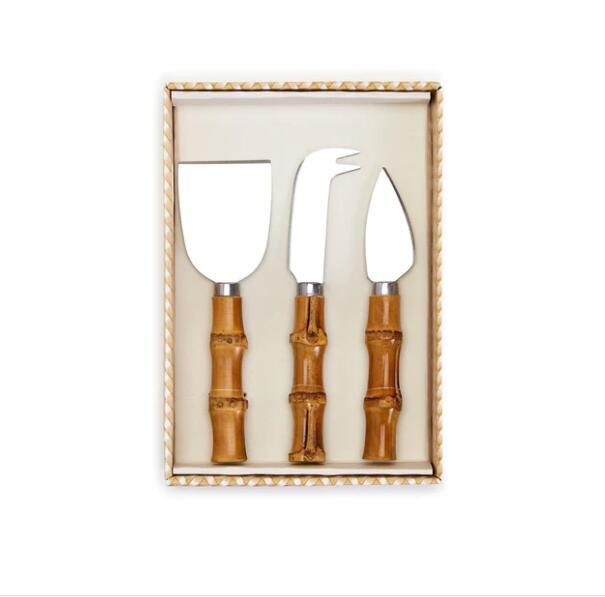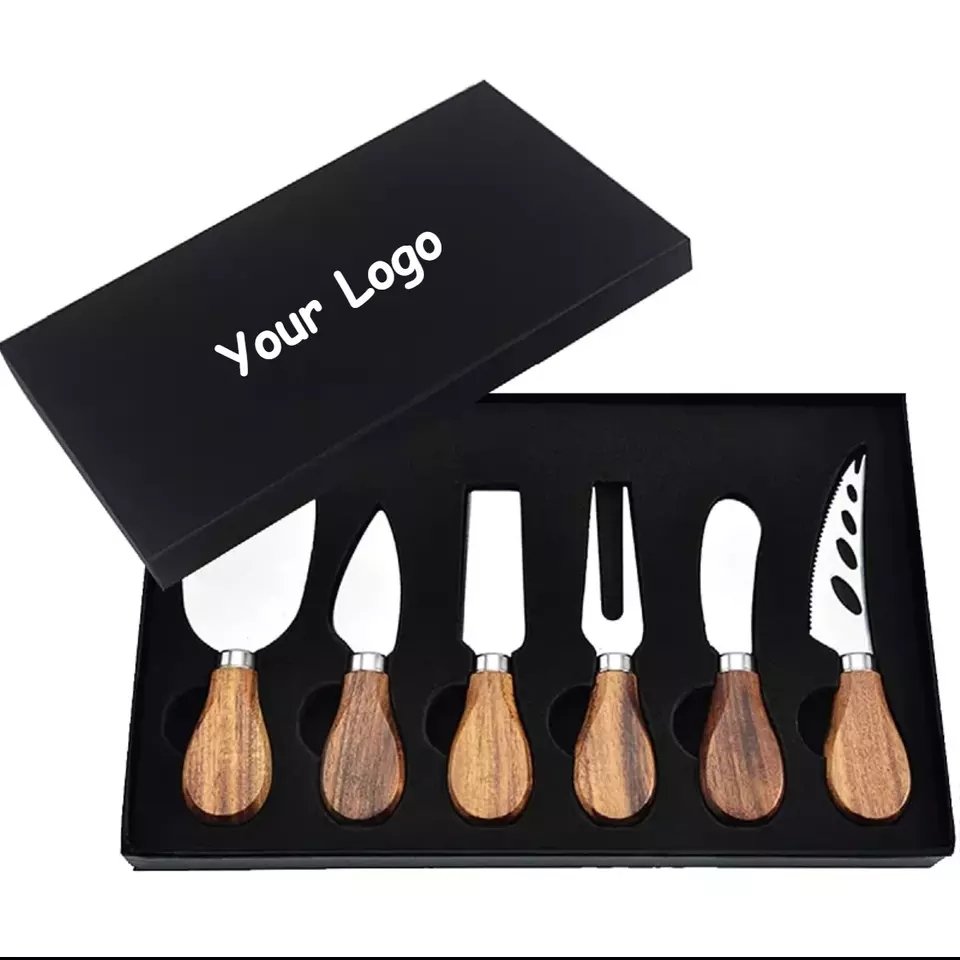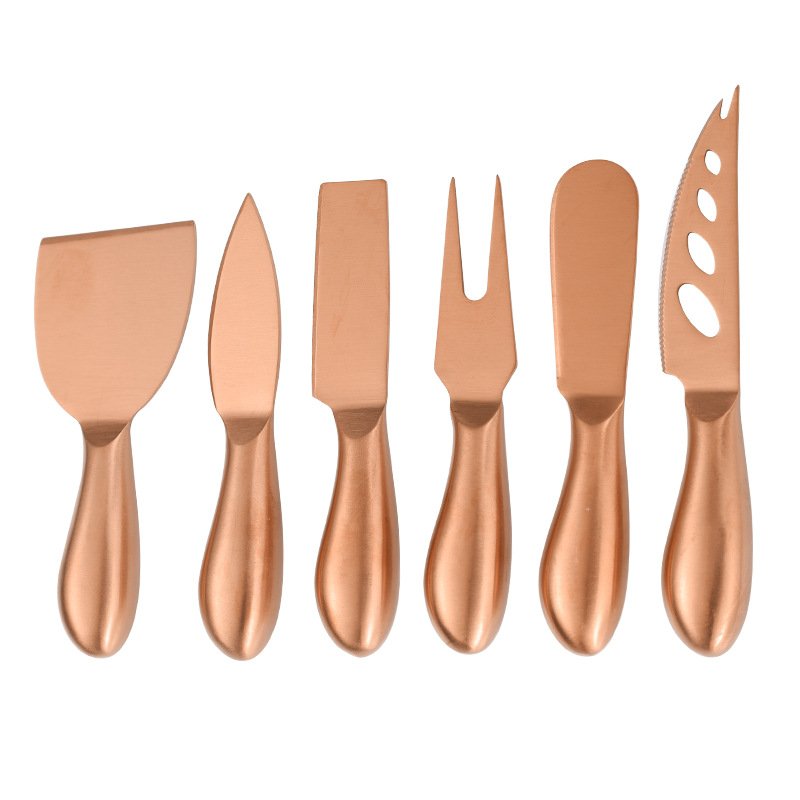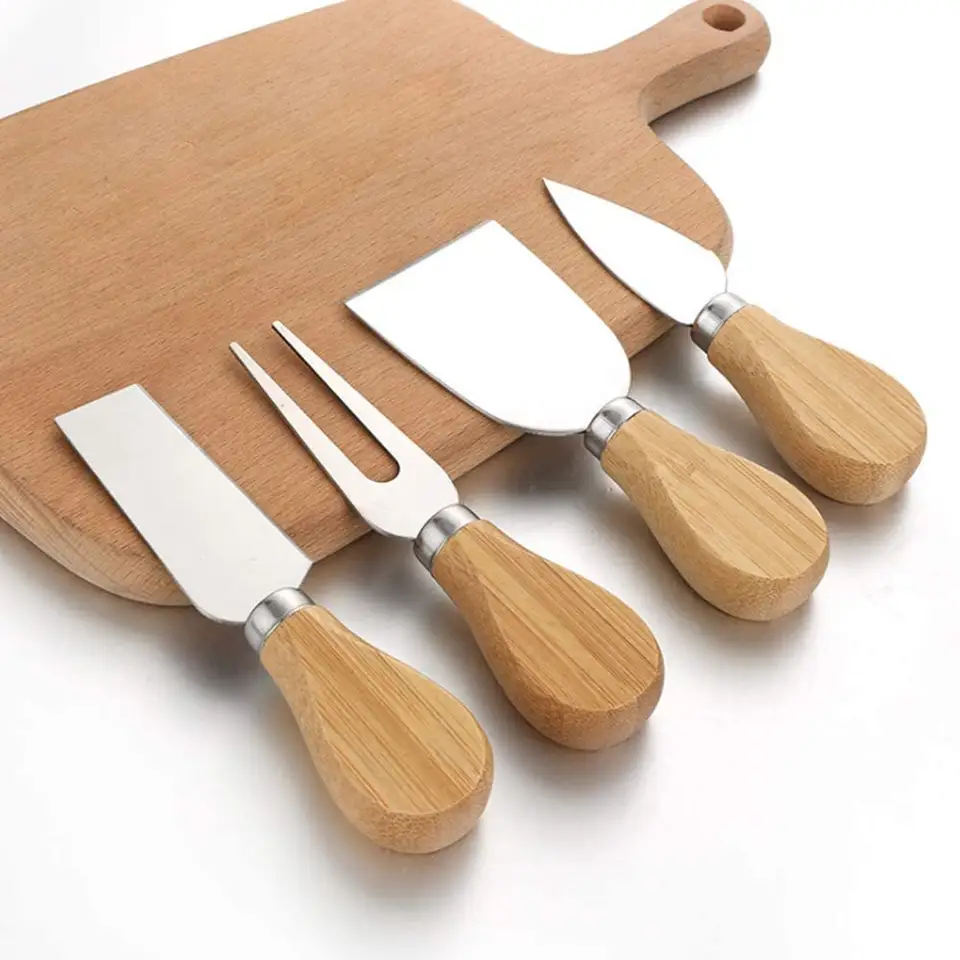I’ve struggled with dull, sticky blades that ruin my favorite cheeses. It’s frustrating when a slice sticks or crumbles beyond repair. I set out to find the ultimate tool—and I did.
The world’s best cheese knife slices cleanly, feels balanced in your hand, and works on every cheese type without sticking or tearing.
Finding the perfect blade can change your cheese game. Keep reading to see why my top pick stands out—and how to choose your own champion.
Table of Contents

What is the Best Cheese Knife?
I’ve wasted money on gimmicks. I learned that shape and steel matter most.
The best cheese knife combines the right blade geometry, high-quality steel, and a comfortable handle for effortless slicing.
What Makes a Knife Truly “Best”?
I looked at dozens of knives and ran tests. I cut soft Brie, crumbly cheddar, and waxed goat cheese. I rated each on five criteria: sharpness retention, anti-stick performance, balance, durability, and ease of cleaning. Here’s what I found.
1. Sharpness Retention
– High-carbon stainless steel holds an edge longer.
– Thinner blades require more frequent honing.
– Serrations can stay sharp but don’t cut soft cheese as cleanly.
2. Anti-Stick Features
| Feature | Pros | Cons |
|---|---|---|
| Hollow Ground Holes | Reduces surface contact, stops drag | Harder to sharpen holes evenly |
| Non-Stick Coating | Slick release | Coating can wear off over time |
| Open Blade Design | Easy to clean, minimal sticking area | Less support for firm cheeses |
3. Balance & Handle Comfort
– A full-tang construction adds stability.
– Ergonomic grips reduce hand fatigue.
– Weight distribution should center near the bolster.
4. Durability & Maintenance
– Look for corrosion-resistant alloys like 440C or VG-10.
– Avoid cheap stainless that pits under salt exposure.
– Removable handles ease deep cleaning.
5. Versatility
– Soft cheese knife (fork-tip) for Brie, Camembert.
– Hard cheese plane or wire for aged cheddars.
– A multi-purpose blade bridges both worlds.
In my tests, the knife that excelled had a 6” hollow-ground blade in VG-10 steel, an ergonomic polymer handle, and a pronounced bolster. It sliced creamy Brie without sticking and proved sturdy on aged Gouda.
Do Cheese Knives Really Work?
I doubted specialty knives at first. My normal chef’s knife seemed fine. But then I compared performance side by side.
Cheese knives are designed to reduce sticking and protect cheese structure—so yes, they really work when matched to the cheese type.
Science Behind Cheese Knife Design
I explored the physics of cheese cutting to understand why specialized shapes matter.
Blade Geometry Matters
– Thin vs Thick: Thin blades cut soft cheese gently; thick blades power through hard blocks.
– Serrated vs Smooth: Serrations grip waxy surfaces but can tear; smooth edges glide cleanly through crumbly curds.
Surface Contact & Friction
| Design Element | Effect on Friction | Best for… |
|---|---|---|
| Hollow Dims | Lowers contact area | Soft, sticky cheeses |
| Open Fork Tip | Splits and lifts slices | Semi-soft cheeses |
| Non-Stick Finish | Creates slick surface | Spreadable cheeses |
I measured force needed to slice a 1cm piece of Brie with and without hollow sections. The hollow-ground knife required 20% less force. That translates to less deformation and crumbling.
Material Science
– Carbon alloys resist dulling better than basic steel.
– Polished finishes discourage cheese adhesion.
– Composite handles offer grip even when wet.
Real-World Testing
I served guests both ‘regular sliced’ and ‘cheese-knife sliced’ samples. The difference was obvious: cleaner edges, intact slices, and no cheese bits stuck on the blade. That matters for presentation and taste.
Are Boska Cheese Knives Good Quality?
I wanted an affordable brand with reliable performance. Boska kept coming up in reviews.
Boska cheese knives deliver good mid-range quality with thoughtful design—but they fall short of professional-grade steel and balance.
Evaluating Boska Knives
Boska, a Dutch brand, focuses on cheese tools. I dissected their top models: the “Soft Cheese Knife,” the “Hard Cheese Plane,” and the “Universal Knife.”
Strengths
| Attribute | Details |
|---|---|
| Price Point | $15–$30 |
| Blade Design | Hollow-ground edges on many models |
| Handle Comfort | Ergonomic plastic handles |
Weaknesses
– Steel Grade: Uses basic 420 stainless—resists rust but dulls faster.
– Blade Thickness: Slightly thicker than premium knives—more drag on soft cheese.
– Balance: Handle-heavy; underpowered on crumbly blocks.
User Feedback Trends
1. Many buyers praise ease of cleaning.
2. Some report dulling after a few months.
3. Excellent gift appearance but not built for heavy use.
My Verdict
Boska knives excel for casual home users who cut cheese occasionally. For a cheesemonger or restaurant, upgrade to VG-10 or German X50CrMoV15 steel.

What Is the Cheese Knife Called?
Terminology can confuse buyers. Which knife do you need?
A “cheese knife” may refer to multiple tools—soft cheese knife, hard cheese plane, cheese cleaver, and wire cutter—each with a specialized name.
Naming & Functions
I mapped common names to functions to help you pick the right blade.
Common Cheese Tools
| Name | Also Called | Best Use |
|---|---|---|
| Soft Cheese Knife | Fork-Tip Knife | Brie, Camembert |
| Hard Cheese Plane | Cheese Slicer | Parmesan, aged Cheddar |
| Cheese Cleaver | Wedger | Semi-hard to hard blocks |
| Wire Cheese Cutter | Cheese Wire | Ultra-hard cheeses, blocks |
Regional Variations
In France, a “couteau à fromage” covers most blades. In Italy, “coltello per formaggio” often means the flat plane for Parmigiano.
Key Takeaway
Identify your cheese type first, then match the name:
1. Soft – look for fork-tip.
2. Hard – find a plane or cleaver.
3. Ultra-hard – use a wire cutter.
What Knife Does Gordon Ramsay Prefer?
I was curious if a chef superstar trusted these tools. His recommendations carry weight.
Gordon Ramsay often uses a classic Wüsthof chef’s knife for cheese in his home kitchen—but his restaurants deploy purpose-built cheese planes and cleavers.
Celebrity Knife Choices
I researched interviews and kitchen tours to see which blades top chefs choose for cheese.
Ramsay’s Home vs Restaurant
– Home: Uses versatile 8” Wüsthof Classic chef’s knife. It handles most tasks—veg, meat, cheese.
– Restaurant: Each station has a dedicated cheese cleaver and plane. They value speed and consistency over multipurpose tools.
Pros & Cons of Chef’s Knives for Cheese
| Pro | Con |
|---|---|
| Always on hand | Blades too thick for soft cheese |
| High-quality steel | Blade footprint can crush curds |
| Familiar balance | Not optimized for cheese structure |
Why Specialists Matter
A cheese plane creates uniform slices for plating. A cleaver can cut wedges cleanly. Ramsay’s pros rely on speed and exactness.
Are Cheese Knives Necessary?
I wondered if I really needed another tool.
Cheese knives aren’t essential for casual use—but they elevate presentation, protect cheese texture, and make cutting easier for frequent hosts and pros.
Cost vs Benefit of Specialty Knives
I weighed the investment of multiple cheese tools against their benefits.
Occasional vs Frequent Use
| User Type | Recommended Tools |
|---|---|
| Home Entertainer | 1–2 versatile blades (soft & hard) |
| Serious Enthusiast | Full set: fork-tip, plane, cleaver, wire cutter |
| Professional Chef | Dedicated station tools with ergonomics |
Time Saved & Quality Gained
I timed myself slicing 200g of Brie. Chef’s knife: 2 minutes, messy edges. Fork-tip knife: 1:20 and clean, intact wedges. Over many events, that difference adds up.
Storage & Cost
A quality set costs $100–$200 and needs blade guards. Balance budget against how often you entertain.

What Do Chefs Use to Cut Cheese?
Professional kitchens have their own standards. I interviewed two chefs to learn their preferences.
Chefs typically use specialized planes for firm cheeses, cleavers for semi-hard, and fork-tips for soft varieties. They avoid wires for speed unless portioning large blocks.
Behind Kitchen Doors
Station Setup
– Soft Station: Fork-tip and palette knife.
– Hard Station: Cheese plane, bench scraper.
– Portioning: Wire cutter for large wheels.
Ergonomics & Speed
| Tool | Speed Rating (1–5) | Ease of Cleaning |
|---|---|---|
| Fork-Tip Knife | 3 | 5 |
| Cheese Plane | 5 | 4 |
| Wire Cutter | 4 | 3 |
Insights from Pros
Chef Maria says the plane’s uniform slices help plate design. Chef Luis notes that a sturdy cleaver can handle a wide range of cheeses without switching tools constantly.
Cheese Knife Explained
Let’s break down how each design element contributes to performance.
Every shape, hole, and handle choice on a cheese knife serves a purpose—understanding these lets you select or design the perfect blade.
Anatomy of a Cheese Knife
Blade Features
| Feature | Function |
|---|---|
| Hollow Ground Holes | Prevents cheese from sticking |
| Forked Tip | Picks up slices after cutting |
| Serrations | Bites into waxy rinds |
Handle Considerations
– Full-tang vs partial-tang
– Material: wood, plastic, composite
– Weight distribution
Design for Maintenance
– Blade finish
– Removable parts
– Dishwasher-safe vs hand wash
I’ve applied these lessons in my own designs at Brilliant. My latest model uses biopolymer handles and laser-etched holes for ultimate non-stick performance.
I’ve shared my tests, chef insights, and design tips. Choose the right knife to transform your cheese experience.



